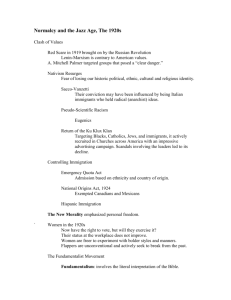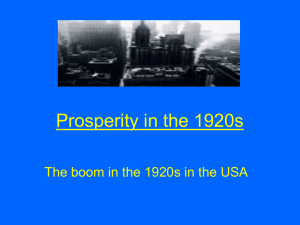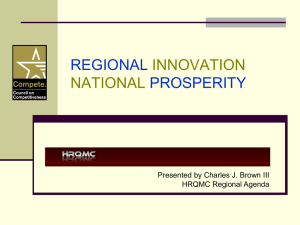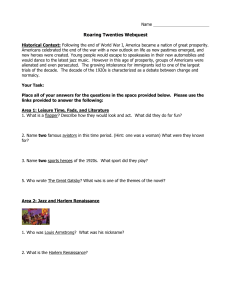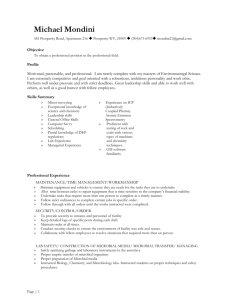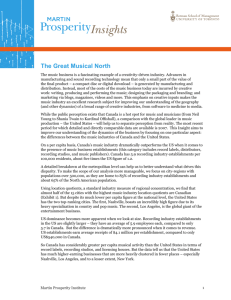Prosperity & Consumerism in the 1920s
advertisement
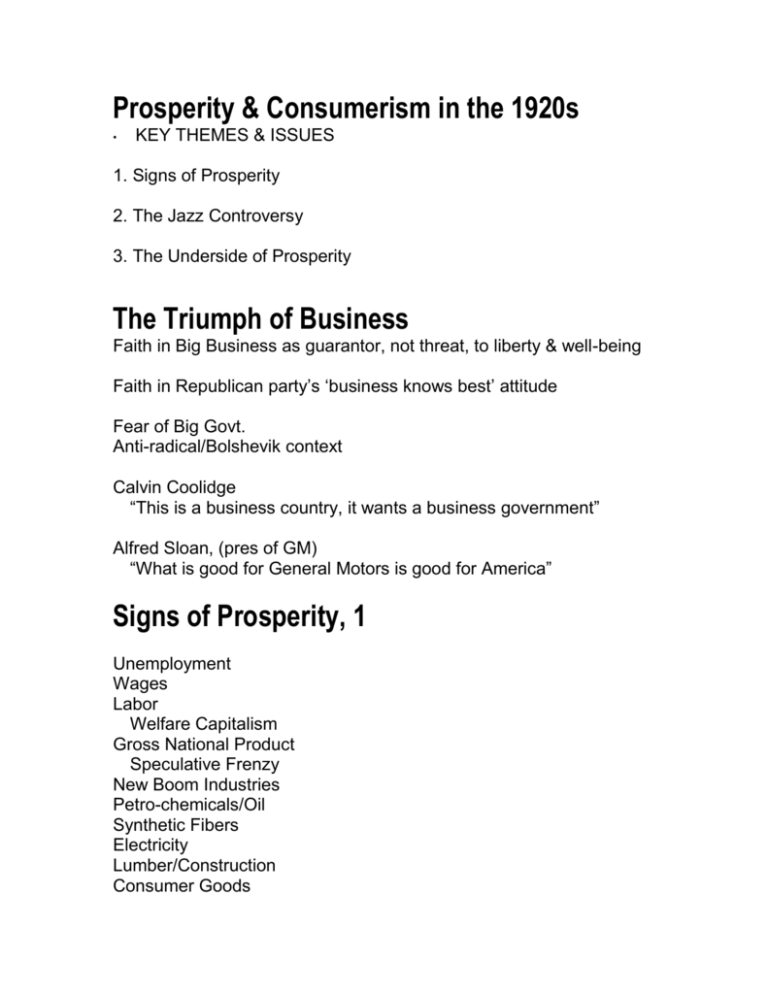
Prosperity & Consumerism in the 1920s • KEY THEMES & ISSUES 1. Signs of Prosperity 2. The Jazz Controversy 3. The Underside of Prosperity The Triumph of Business Faith in Big Business as guarantor, not threat, to liberty & well-being Faith in Republican party’s ‘business knows best’ attitude Fear of Big Govt. Anti-radical/Bolshevik context Calvin Coolidge “This is a business country, it wants a business government” Alfred Sloan, (pres of GM) “What is good for General Motors is good for America” Signs of Prosperity, 1 Unemployment Wages Labor Welfare Capitalism Gross National Product Speculative Frenzy New Boom Industries Petro-chemicals/Oil Synthetic Fibers Electricity Lumber/Construction Consumer Goods Signs of Prosperity, 2 Signs of Prosperity, 3 Retail Innovations Advertising J. Walter Thompson Madison Avenue Credit (Hire Purchase) Supermarkets A&P Mail Order Marshall Ward Signs of Prosperity, 4 Tourism Carson Robinson & the Pioneers, “The West Ain’t What it Used to Be” “Instead of grassy lands, there’s classy hot dog stands…” “The old corral is now a parking place, for 50c you rent a tiny space…” “For all the cowboys that we know are crooning on the radio…” (eg: Gene Autry) “No more the good old time saloon, with sawdust on the floor & brass spitoons. In valleys, hills & mountains they’ve changed to soda fountains, and the only things get stewed are the prunes.” Mass Popular Culture Movies Radio Recordings Pro-Sports Jack Dempsey Red Grange Babe Ruth The Jazz Age, 1 White Popularizers “Livery Stable Blues”, Original Dixieland Jass Band, 1917 “Whispering,” Paul Whiteman, 1920 “Rhapsody in Blue, George Gershwin” 1924 The Jazz Age, 2 New Orleans Black Roots Buddy Bolden Freddie Keppard Migration (Chicago & NY) Joe ‘King’ Oliver, “Canal Street Blues,” 1923 Louis Armstrong, “West End Blues,” 1928 Fletcher Henderson Duke Ellington Swing The Jazz Controversy A Paradox: 1. Some whites opposed jazz because it was risque, taboo, sensual, passionate, drawn from black culture & represented a challenge to mainstream values and practices. But, 2. Some whites loved jazz because it was risque, taboo, sensual, passionate, drawn from black culture & represented a challenge to mainstream values and practices. The Underside of Prosperity Uneven distribution of wealth Agrarian distress Some old heavy industries in relative decline Uncontrolled use of non-renewable fuels Conclusions 1. The 1920s saw a boom in many sections of the economy. 2. The benefits of that boom were unevenly distributed and in some sections of America -- particularly in the agricultural sector -hardly registered at all. 3. The mass media and popular culture industries became major forces in American life, both shaping and reflecting important social, moral and economic trends. 4. The decade witnessed continuing tensions between the forces advocating change and those clinging to the past.

